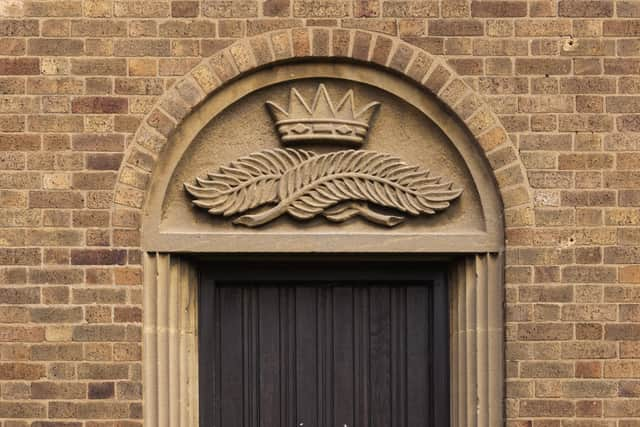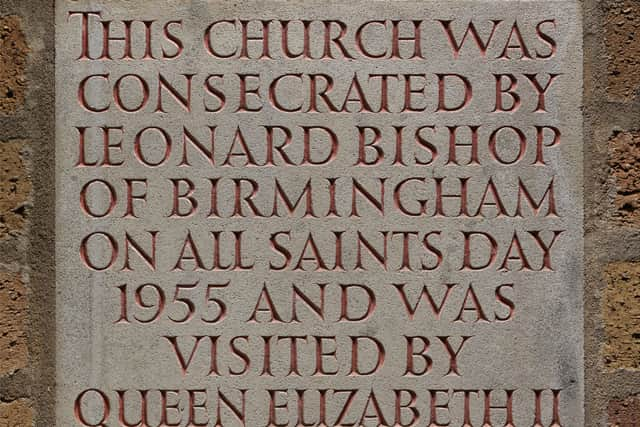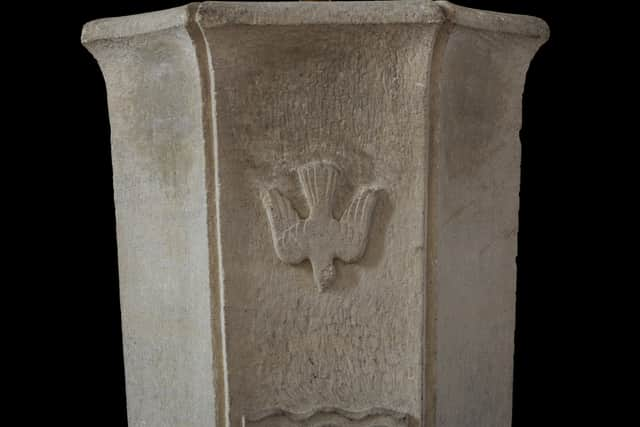Queen’s Platinum Jubilee: Birmingham church granted protected status to celebrate
This article contains affiliate links. We may earn a small commission on items purchased through this article, but that does not affect our editorial judgement.
and live on Freeview channel 276
The first church built in Birmingham after the Second World War has been granted protected status to celebrate the Queen’s Platinum Jubilee.
All Saints Church in Shard End has been listed by the Department for Digital, Culture, Media and Sport (DCMS).
Advertisement
Hide AdAdvertisement
Hide AdThe department issued the protections on Historic England’s advice to reflect key social, technical and cultural changes over the 70 years of the Queen’s reign.
The construction of All Saints was funded by the War Damage Commission in 1954. It was named after a church on Cooksey Road in Small Heath which was obliterated by German bombs during the second World War. The Queen visited it in 1955 - just three years after she ascended to the throne.
All six sites have been visited by the Queen, often with the Duke of Edinburgh as part of a royal tour of an English city.


The five other sites which have been granted protected status along with All Saints Church are:
- The Queen’s Theatre in Hornchurch, London, which opened in 1975, and was influenced by German architect Ludwig Mies van der Rohe.
- In Stroud, Gloucestershire, the 19th-century Imperial Hotel has been chosen for its impressive stone masonry crafted using local limestone. Inspired by Cotswold market halls and continental colonnades, the structure was refurbished in 1950 before the Queen’s visit.
- Completed in 1993, the youngest building to be listed for the Jubilee is the Hampshire Archives in Winchester. Local brick was used within the walls of its steel-and-concrete frame – a reference to the surrounding Winchester Conservation Area and the nearby remains of the medieval city wall. When it was formally opened by the Queen accompanied by her late husband in 1993, Philip commented on how the building resembled a cruise liner.
- 4. Also listed is the Art Deco Sun Pavilion and Colonnade in Harrogate, North Yorkshire, which was constructed in 1933 as a place for people to relax after exercising or using the spa in the town centre. After a period of decline in the 1980s, the classical structure was restored following a campaign led by local resident Anne Smith, and supported by celebrities including author James Herriot. It was officially reopened by the Queen in 1998.
- Commemorative motorway markers on the M62 running through Yorkshire and Lancashire are also being listed, after the Queen opened the motorway in 1971. Running through the Pennines, it was the country’s highest motorway, reaching a summit of 372 metres across the border between the counties. Two plaques displaying the historic symbols of the Red Rose of the House of Lancaster and the White Rose of the House of York mark each end of the road.


What has Historic England said about the new protection grants?
Duncan Wilson, chief executive of Historic England, said: “These new listings celebrate the diversity and richness of our heritage overseen by Her Majesty during her 70-year reign, showing how the fabric of the nation has changed and developed.
Advertisement
Hide AdAdvertisement
Hide Ad“These sites cover the length and breadth of the country – from All Saints’ Church near Birmingham, which she opened in 1955 when she was newly crowned, to the high-tech Hampshire Public Records Office, completed in 1993.”
Heritage minister Nigel Huddleston added that the listings were “a fitting way” to mark the Queen’s Jubilee.
He said: “These historic sites provide a fantastic opportunity to reflect on how much life in the UK has changed during Her Majesty the Queen’s 70-year reign.
“Listing them as part of the Platinum Jubilee celebrations is a fitting way to pay tribute to the longevity of her service.”
Advertisement
Hide AdAdvertisement
Hide AdNext month, the Queen will become the first British monarch to celebrate a Platinum Jubilee after 70 years on the throne.
The nation will host celebratory events across a five-day bank holiday starting on June 2.


A message from the editor:
Thank you for reading. BirminghamWorld is Birmingham’s latest news website, championing everything that is great about our city - reporting on news, lifestyle and sport. Find out more about who’s who in the team, and our editorial values. We want to start a community among our readers, so please follow us on Facebook,Twitter and Instagram, and keep the conversation going.
Comment Guidelines
National World encourages reader discussion on our stories. User feedback, insights and back-and-forth exchanges add a rich layer of context to reporting. Please review our Community Guidelines before commenting.
